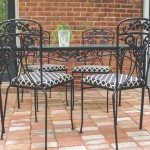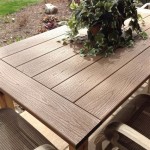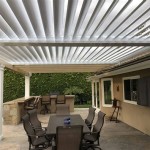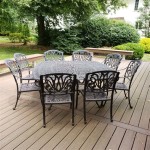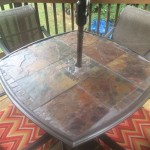Concrete Block Patio Wall: An Essential Guide
Concrete block patio walls are an excellent solution for adding structure and style to your outdoor space. They provide a robust and durable barrier, defining the boundaries of your patio and creating a cozy and inviting atmosphere. Whether you're a seasoned DIY enthusiast or a novice home decorator, understanding the essential aspects of concrete block patio walls is crucial for a successful project.
Types of Concrete Blocks
Concrete blocks come in various shapes, sizes, and textures. The most common types include:
- Standard concrete blocks: Rectangular blocks are available in varying thicknesses and are ideal for straightforward wall construction.
- Interlocking concrete blocks: These blocks feature interlocking tabs and grooves, allowing for easy and rapid assembly without the need for mortar.
- Split-face concrete blocks: Aesthetically appealing blocks with a rough, natural stone-like texture.
- Cap blocks: Used as a decorative finishing touch on top of the wall, providing a clean and polished look.
Planning Your Wall
Before starting construction, it's essential to plan the layout of your wall. Consider the dimensions of your patio, the desired height of the wall, and any potential obstacles. Sketch out the wall's footprint and mark the corners. Use stakes and string to establish precise lines for the foundation.
Foundation Preparation
A solid foundation is vital for the longevity of your wall. Dig a trench along the planned wall line, at least 12 inches deep and 12 inches wide. Level the bottom of the trench and fill it with crushed gravel, tamping it down firmly. Install a layer of sand on top of the gravel and level it for a smooth surface.
Mortar Preparation
Concrete block walls typically use mortar to bond the blocks together. Mix the mortar according to the manufacturer's instructions, achieving a consistency that is workable yet not too runny. Apply a layer of mortar to the base of the first course of blocks, then position the blocks in place, ensuring they are level and plumb.
Building the Wall
Continue building the wall course by course, alternating the direction of the blocks for added stability. Apply mortar to the top of each course and the vertical joints between the blocks. Use a level and plumb line to ensure the wall remains straight and upright. Stagger the joints between vertical courses as well.
Finishing Touches
Once the wall is constructed, you can add decorative elements such as cap blocks to enhance its appearance. Use a brush or trowel to apply mortar to the top of the wall, then place the cap blocks on top. Smooth the mortar joints and remove any excess.
Maintenance and Care
Concrete block patio walls are relatively low-maintenance. Regular cleaning with a pressure washer can help remove dirt and mildew. Inspect the wall periodically for any cracks or damage and repair them promptly. Seal the wall with a clear concrete sealer to protect it from moisture and stains.
Conclusion
Concrete block patio walls are a versatile and durable addition to any outdoor space, providing both function and aesthetics. By understanding the essential aspects of these walls, including the types of blocks, planning, foundation preparation, mortar use, building techniques, and finishing touches, you can create a beautiful and long-lasting wall that will enhance the enjoyment of your patio for years to come.

Make A Cinderblock Wall Planter Digging

Concrete Block Sitting Wall Idea Gallery Sacramento Ca

A Diy Cinder Block Retaining Wall Project Decoist

Grey Concrete Blocks Quality For Landscaping Adelaide

Retaining Wall Blocks Landscaping Network

Planning And Building A Concrete Block Retaining Wall

Yes We Paint Block Walls Too Cinder Garden Wall

How To Build Strong Patio Walls

Modern Cinder Block Wall Design Parallel Rows Of Burnished Concrete Walls Are Tied Together With P Landscaping Outdoor
:strip_icc()/102540132-967f759f9889485c867e94c671dd7bc0.jpg?strip=all)
How To Work With Concrete Block


